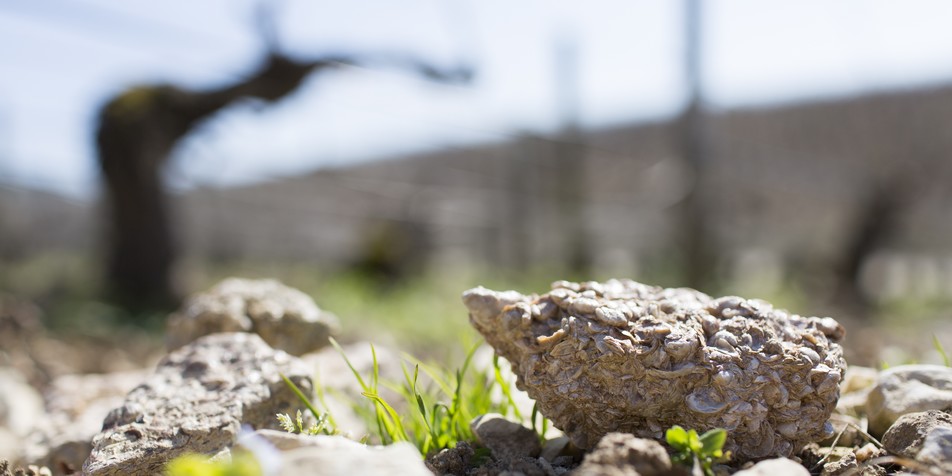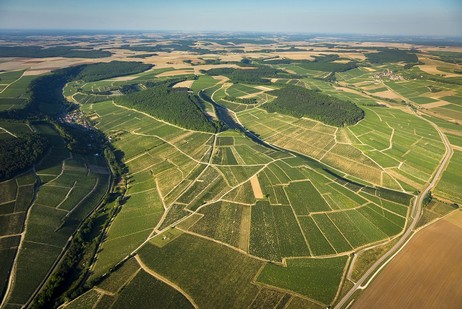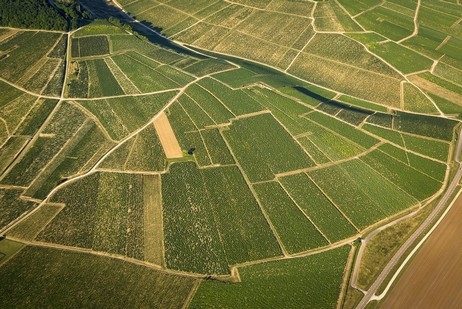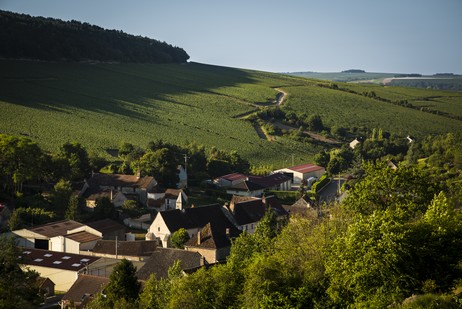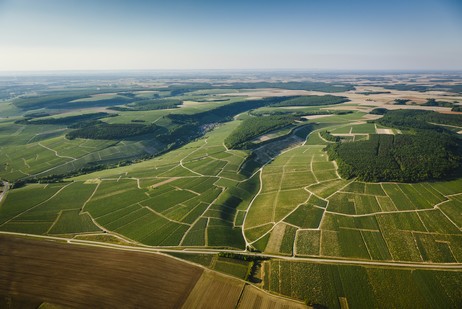Montée de Tonnerre, Chapelot, Côte de Bréchain and Pied d’Aloup
Montée de Tonnerre, a flag-bearing Climat
Character, stories and legends
- Full-bodied and balanced, Montée de Tonnerre is a subtle blend of minerality with notes of salinity, finesse and elegance. This Premier Cru combines essentially the best of Chablis! Including an amazing ageing potential... After 10 or 15 years, Montée de Tonnerre will shock with its incomparable complexity and its exceptional mineral structure.
- Spelled this way as early as 1537, Montée de Tonnerre has treasured its name. It must be said that for Chablis, such an explicit term is quite unusual: this Climat is located along the old Roman road connecting Tonnerre with Auxerre. Four centuries later and Tonnerre has not moved, so the reference is still as relevant as ever!
Chapelot
Character, stories and legends
- Chapelot produces wines with an assertive and refined minerality, perfectly in line with those of Montée de Tonnerre. Charming and elegant, these wines are enjoyable throughout their lives. Even after ageing for 15 years, they will still be excellent in their prime.
- Viewed from above, this Climat looks like a fan. Legend has it that its name most likely comes from the word "capel", meaning a "wide cloak" (cape), with reference to its particular form. However, as this Climat also has the distinction of being nestled in the bottom of a hill, another explanation comes to mind: Chapelot (pronounced "Chaplot" in Burgundy) could be the diminutive of the word "chape", meaning shelter or lean-to. Could there perhaps have been shacks here? It may be noted that "cabotte" or even "cadole" also have the same origin ...
Côte de Bréchain
Character, stories and legends
- While its minerality is as precise as that of its neighboring Climats, Côte de Bréchain always turns out exceptionally crisp. Outstanding in their early years, taking the time to tame them is important; they reveal their full structure after a few years’ ageing.
- Spelled "bruchen" in 1477, Côte de Bréchain most likely gets its name from the word "brèche" in reference to a breach or a hole. This makes sense, knowing that many fissures run through the limestone close to the nearby village of Fyé. Now and then, they release water vapor when the winter is particularly cold!
Pied d’Aloup
Character, stories and legends
- Sometimes austere at first, Pied d'Aloup can be disconcerting. Take the time to get to know it: let it age 3 to 5 years to discern its elegance, its persistent energy and its saline minerality so characteristic of Chablis. With its capacity to develop over the long term, Pied d'Aloup could still surprise you after 15 years or more.
- Can you believe it? The name of this Climat could apparently come from a misinterpretation or a misspelling made by a surveyor! He got muddled up and wrote "Pied d'Aloup" on the land registry in 1829... This name would actually come from the Old French "aloe" which means "alouette" (lark). The winegrowers of Chablis believed these birds were so light that they alone did not get bogged down in the clay ground after the rains. Between "aloup" and "alouette", there is only a step ... or rather a P! Another explanation refers to a plant that may have once grown here: larkspur!
